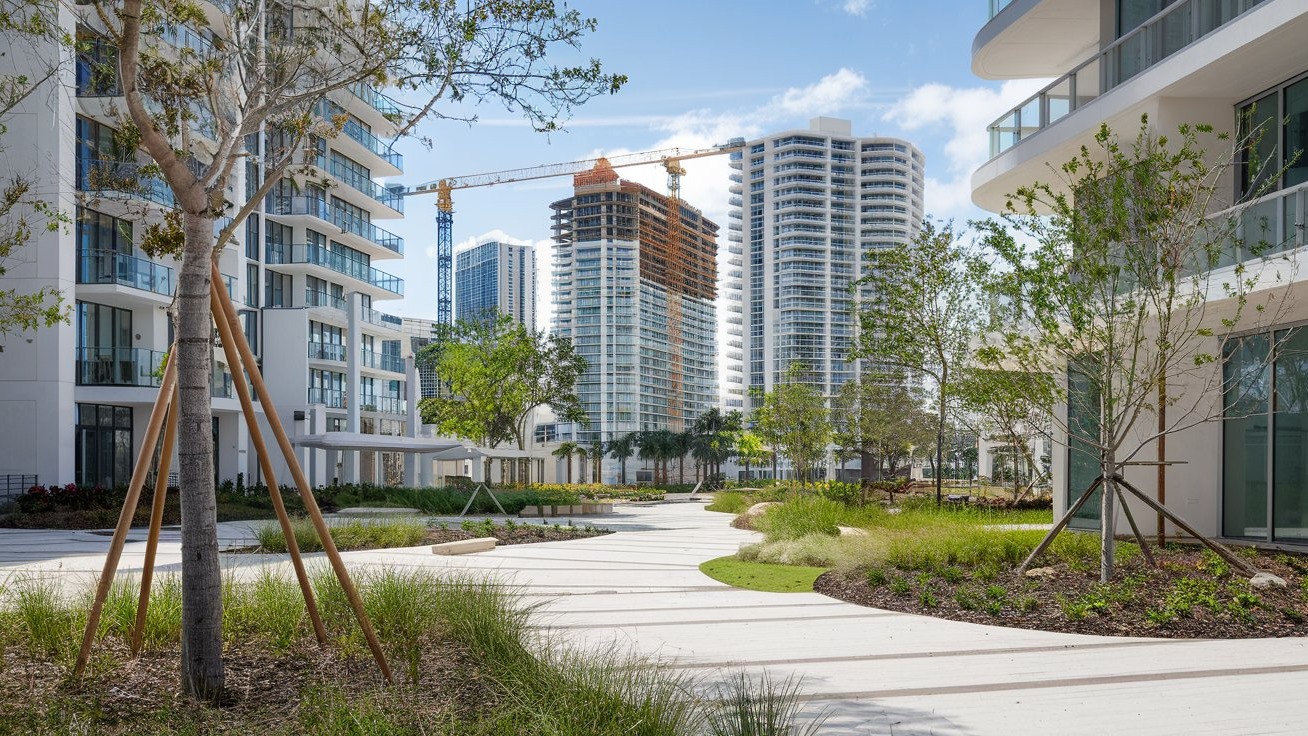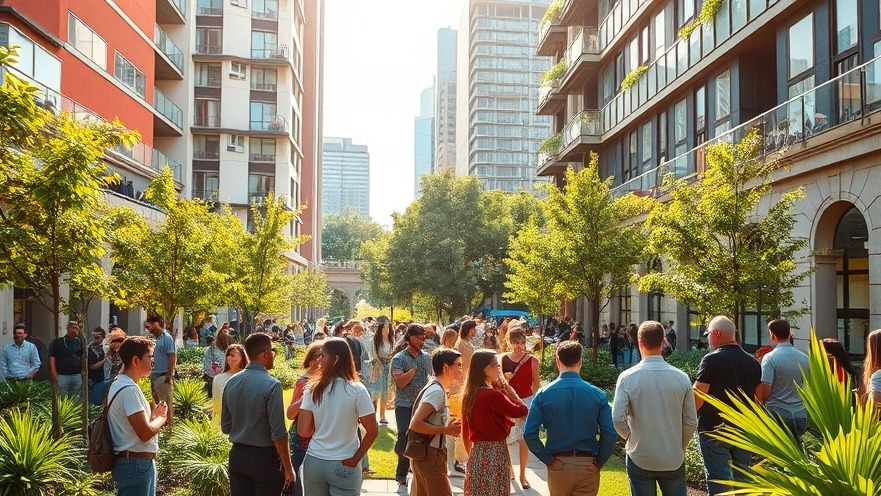
The Future of Florida’s Cities—A Bold Vision or a Pipe Dream?
Picture this: You step out of your front door and within minutes, you can grab a coffee, hit the gym, pick up groceries, and even get to work—all without ever setting foot in a car. Sounds like a dream, right? But for many cities around the world, it’s just everyday life.
Now, contrast that with Florida, where traffic congestion is a daily battle, public transit is an afterthought, and walkability feels like a distant fantasy. Can that change? And more importantly, should it?
Enter Thomas Schmidt, a commercial land developer who doesn’t just acquire land—he envisions the future of cities. With a front-row seat to the way urban landscapes evolve, Schmidt has a unique perspective on whether Florida can—or will—shift away from its deeply ingrained car culture.
“The idea of transit-oriented developments is incredible in theory,” Schmidt says. “But without the right infrastructure, you might as well be building on an island.”
That’s the challenge: vision vs. reality. We all want more vibrant, walkable communities, but what does it really take to make that happen?
In this conversation, we’ll dive into:
✅ The hidden roadblocks holding back Florida’s urban transformation
✅ The real reasons transit-friendly developments struggle to get funding
✅ How innovation—like 3D-printed homes—could reshape real estate
✅ What Schmidt sees as the next big wave in commercial development
Whether you’re an investor, entrepreneur, or just someone tired of sitting in traffic, this interview is packed with insights you don’t want to miss. Because change is coming—the only question is: who’s going to lead it?
Thomas Schmidt’s Entrepreneurial Journey: From Land Hunter to City Shaper
Some people build businesses. Others build the foundations for entire communities. Thomas Schmidt falls into the latter category.
But before he became a go-to expert in commercial land development, before he started identifying prime real estate for multi-million-dollar projects, he was just a guy with a knack for seeing potential where others saw empty lots.
The Spark That Started It All
Like many entrepreneurs, Schmidt’s journey into land development wasn’t a straight path—it was a series of pivots, opportunities, and a relentless drive to figure things out.
“I’m the guy who goes out and finds the land pieces for these guys,” Schmidt says. Simple? Not exactly.
In a world where location dictates success, the stakes are high. Pick the wrong area, and a development project can stall for years. Pick the right one, and you’re not just constructing buildings—you’re shaping the way people live, work, and connect.
Schmidt quickly realized that land development wasn’t just about real estate—it was about understanding people. What do they need? Where are they moving? What’s missing in a city’s infrastructure that could unlock massive growth?
These were the questions that drove him, and they were the same questions that would later put him at the center of the walkability revolution—a movement that’s reshaping cities worldwide.
From Empty Land to Thriving Communities
Early in his career, Schmidt focused on traditional real estate development—finding land for commercial and residential projects. But over time, he noticed a shift in what cities and investors were looking for.
“A lot of cities and towns are focused on what they call TODs—Transit-Oriented Developments,” he explains. “In theory, they’re fantastic. You step off a train, and everything you need is right there—shops, restaurants, even your job.”
The problem? Florida isn’t built that way.
Unlike cities in Europe, where public transit is a way of life, Florida’s urban sprawl has been built around cars, highways, and long commutes. The idea of transit-friendly developments sounds great, but making them a reality is an uphill battle.
“The infrastructure isn’t there yet,” Schmidt says. “You can’t just build a walkable community in the middle of nowhere and expect people to move there. Someone’s got to take the risk and prove it works.”
And that’s exactly where Schmidt’s expertise comes in—finding strategic locations where development meets demand.
Recognizing Opportunity Before Everyone Else
If there’s one thing Schmidt has learned, it’s that timing is everything.
Take South Florida, for example. With massive population growth and some of the worst traffic congestion in the country, the demand for walkable, transit-friendly areas isn’t just a luxury—it’s a necessity.
“Miami-Dade, Palm Beach, Broward—they’re the ones leading the charge,” he says. “People there can’t afford to waste hours in traffic anymore. Developers are starting to realize they need to build smarter communities—ones that don’t rely on cars for everything.”
And here’s where the real estate lesson comes in: the best opportunities happen where necessity meets innovation.
✅ Lesson #1: Watch for cities with unsolved infrastructure problems—that’s where demand is highest.
✅ Lesson #2: Don’t wait for trends to be proven. The first movers take the biggest risks but also reap the biggest rewards.
Florida’s urban landscape isn’t going to change overnight, but Schmidt is betting that small, well-placed developments will create the blueprint for something bigger.
“It starts with one success story,” he explains. “One developer proves it can work, and suddenly everyone else jumps in. That’s how change happens.”
The future of real estate isn’t just about buying land—it’s about understanding the next wave of urban evolution.
And as Schmidt sees it, that wave is already rolling in. The only question is: who’s ready to ride it?

Key Challenges & Turning Points: The Roadblocks to a Walkable Florida
When you think about walkable cities, you probably picture places like New York, San Francisco, or European capitals where public transit is a given and life moves at a pedestrian-friendly pace. But in Florida, where highways dominate and public transportation lags behind, the vision of transit-oriented development (TOD) faces serious roadblocks.
For Thomas Schmidt, this isn’t just a philosophical debate—it’s a daily challenge in the world of commercial land development.
“The idea of transit-friendly communities is incredible in theory,” Schmidt says. “But the reality is, a lot of these developments don’t get funded because they’re in what I’d call tertiary markets—places where the infrastructure just isn’t there yet.”
In other words, you can’t build a walkable city in the middle of nowhere and expect people to come.
Challenge #1: The Infrastructure Gap
Schmidt explains that for walkable communities to work, you need the right foundation:
Reliable public transportation (trains, buses, bike paths).
Well-planned mixed-use developments (homes, jobs, retail all within walking distance).
A shift in consumer behavior (getting people comfortable with public transit).
The problem? Florida’s infrastructure isn’t built for this—yet.
“Take Orlando,” he says. “We have the SunRail, but it’s not enough. A few areas like DeBary and Kissimmee are trying to build around transit, but the reality is, Orlando is still a car city.”
Compare that to Miami-Dade, where congestion has forced a shift toward alternative transit solutions like Brightline and Tri-Rail. There, transit-friendly development isn’t a luxury—it’s a necessity.
Challenge #2: Funding & Investor Reluctance
Even when there’s demand, getting investors to commit to these projects is another battle.
“Investors like safe bets,” Schmidt explains. “Walkable communities sound great, but if they don’t have proven success in a market, developers hesitate to fund them.”
The U.S. real estate market moves differently than cities in Europe or Asia, where public transit is ingrained in daily life. Here, car culture is king, and breaking that habit requires bold financial risk.
✅ Lesson #1: If you’re in real estate or development, watch for early adopters. The first successful TOD project will set the stage for an entire wave of investment.
Challenge #3: Overcoming Public Perception
The biggest challenge? Changing how people think about transit.
“In Florida, there’s a stigma around public transportation,” Schmidt says. “In other countries, people of all income levels use trains, buses, and bikes. Here, a lot of people see it as a last resort, not a first choice.”
This cultural mindset creates a Catch-22:
Developers won’t build transit-friendly communities without guaranteed demand.
People won’t use public transit until it’s convenient and accessible.
So, who makes the first move?
Schmidt believes it will take small, successful developments to shift the conversation. And that brings us to the turning point: where change is already happening.
The Tipping Point: Where TODs Are Finally Taking Off
Despite these challenges, Schmidt sees promising signs.
“Miami-Dade, Palm Beach, Broward—they’re the places where transit-oriented development is really starting to happen,” he says. “They have the population density and the traffic problems that make it necessary.”
Here’s why South Florida is leading the charge:
✅ Massive population growth is making car dependency unsustainable.
✅ Brightline & Tri-Rail expansion is proving that people will use public transit when it’s done right.
✅ Developers are watching Miami—if it works there, it’s only a matter of time before Orlando and Tampa follow suit.
“If it starts working in Miami,” Schmidt says, “then it’ll spread to Orlando, then Tampa, then Jacksonville. That’s just how Florida moves.”
This shift won’t happen overnight, but it’s coming. The challenge now? Who’s willing to take the first big leap?
Major Lessons & Innovations in Development
If there’s one thing the real estate market teaches time and time again, it’s that the landscape is constantly evolving—sometimes by necessity, sometimes by innovation. The push toward walkable communities and transit-oriented developments (TODs) is a reflection of both.
Lesson #1: Follow the Demand, Not Just the Trends
Trends come and go, but the most successful real estate investments are driven by real, long-term demand. The demand for transit-friendly communities isn’t just a buzzword—it’s a response to congestion, high commuting costs, and shifting lifestyle preferences. While some areas may still be hesitant to embrace car-free living, dense urban centers are already seeing movement in that direction.
Lesson #2: Infrastructure Shapes Investment
It’s easy to look at a successful mixed-use development in a city like Chicago or San Francisco and assume the same model will work elsewhere. But without the right infrastructure in place—public transit, pedestrian-friendly streets, and commercial hubs—TODs struggle to gain traction. For developers, this means identifying locations where infrastructure investment is already in progress or where future improvements are likely to happen.
Lesson #3: Affordability & Sustainability Must Go Hand in Hand
With rising construction costs, developers and investors are searching for cost-effective yet sustainable building solutions. Innovations such as modular construction, 3D-printed homes, and prefabricated materials are reshaping the industry by offering faster, more affordable ways to build. These methods not only lower costs but also contribute to sustainability efforts by reducing waste and improving energy efficiency.
Lesson #4: Early Movers Set the Market
Major shifts in real estate don’t happen overnight. The first successful TOD projects will act as proof of concept, paving the way for larger-scale investments. Developers who can position themselves ahead of the curve—before transit-friendly communities become the norm—stand to reap the biggest rewards.
Lesson #5: Walkability Is About More Than Just Convenience
The push for walkable communities isn’t just about reducing car dependency—it’s about improving quality of life. Cities designed for walking and cycling promote better health, stronger local economies, and greater community engagement. As urban areas continue to grow, developments that prioritize livability, sustainability, and accessibility will hold the strongest long-term value.
The future of real estate is about adapting to the evolving needs of modern communities. Whether through strategic land development, smart infrastructure planning, or embracing new construction technologies, the developers who recognize these trends early will be the ones who shape the next generation of thriving cities.

Conclusion: The Future of Urban Development Starts Now
The landscape of real estate is changing, and with it, the way cities are built. The demand for walkable communities, transit-oriented developments, and innovative construction methods isn’t just a fleeting trend—it’s a necessary evolution in how we design spaces where people live, work, and connect.
Florida, long known for its sprawling highways and car-dependent culture, is reaching a turning point. The question is no longer if transit-friendly, sustainable communities will take hold, but who will step up to make them a reality.
From following the demand to leveraging infrastructure investments and adopting new construction technologies, this shift presents an enormous opportunity for developers, investors, and forward-thinking entrepreneurs. The first movers—those willing to take the calculated risk—stand to gain the most, both financially and in shaping the future of urban life.
But this change isn’t just about business—it’s about creating better cities for people. Walkable, transit-friendly developments mean:
✅ Healthier lifestyles with more movement and less stress.
✅ Stronger local economies as businesses thrive in well-planned, high-foot-traffic areas.
✅ A smarter approach to growth, reducing congestion and enhancing overall quality of life.
The time for waiting is over. The shift is happening now. Whether you’re a developer looking for your next big project, an investor searching for emerging opportunities, or simply someone who envisions a better, more livable future, the moment to act is today.
What’s next for you? Are you ready to be part of this transformation? Connect with Thomas Schmidt and his team to explore opportunities in commercial land development and sustainable urban planning. Because the future of real estate isn’t just about buildings—it’s about creating places where people truly want to be.
👉 Reach out today and take the first step toward shaping the cities of tomorrow.
 Add Row
Add Row 
 Add
Add 


Write A Comment